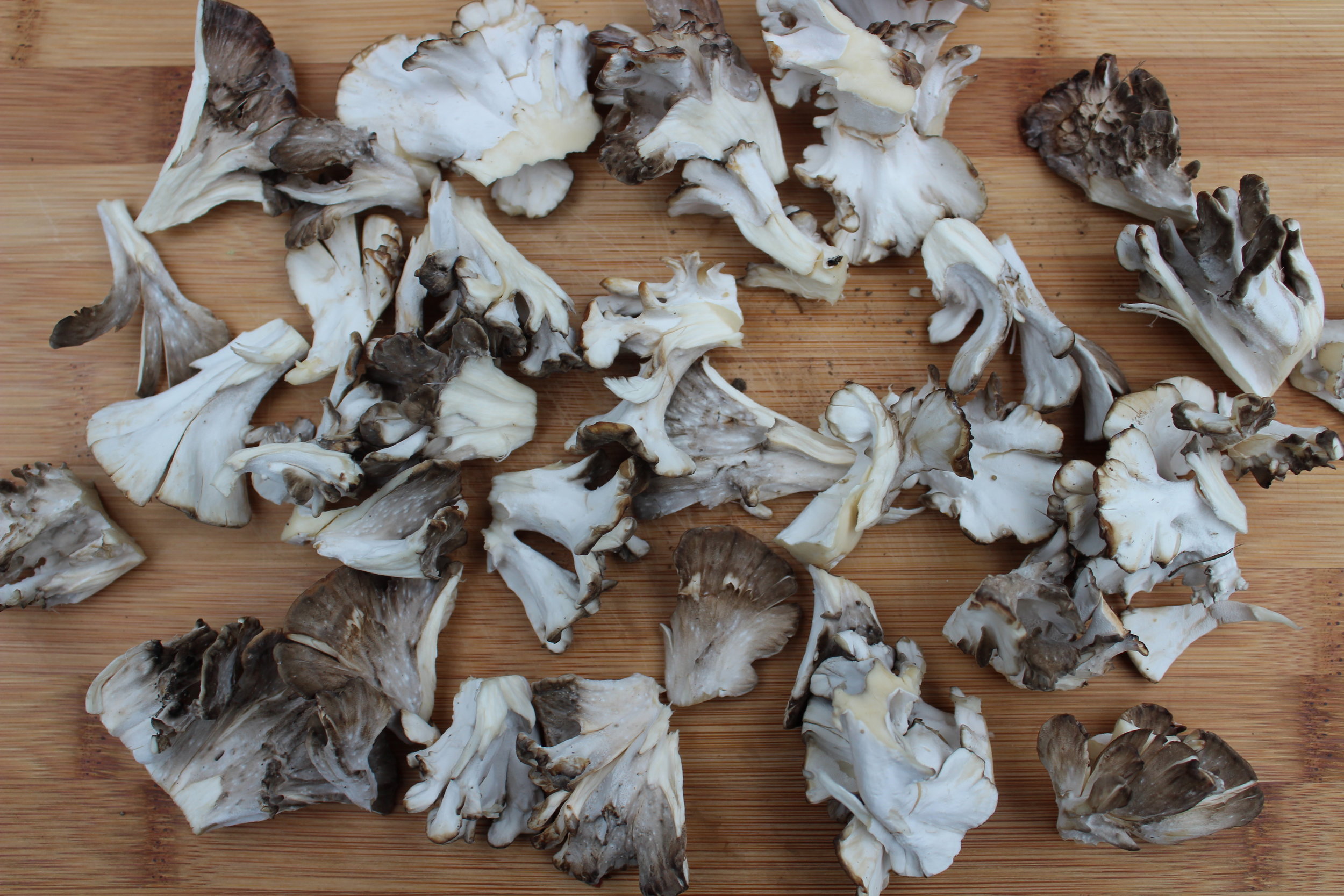October's Mushroom Bounty
Every October, mushrooms erupt from beneath soggy leaves and yellow pine needles. This year, a relatively wet summer has resulted in a bumper crop of fungus.
Angel hair pasta tossed with sautéed Hen of the Woods, parsley, and Parmesan.
When my mushroom forager friends, Chris & Seyrel Williams gifted me a plastic shopping bag with about ten pounds of uncleaned Hen of the Woods, I was both delighted and, I admit, slightly daunted. It has been decades since I’ve encountered uncleaned Hens and, though I know it’s safe, when I asked Chris, “What percent are you sure that this won’t kill me and my family,” he laughed and said, “I am 100% sure this will not kill anyone.”
A literal bumper crop of mushrooms in the trunk!
Hen of the woods mushrooms, (also known as Maitake) are intensely flavored but delicate and delicious. For me, what sets this mushroom apart isn’t the flavor, it’s the texture. Hens are polypore mushrooms which have a very different structure than the common mushrooms found in grocery stores. They are organized in large clusters of rosettes arising from a single, branched stem. They are called Hen of the Woods because in a bunch, they resemble the feathers of a bird. Though the entire fungus is edible, the feathers, also referred to as petals, are the most tender. The base can be used for mushroom stock.
Preparing them for cooking is easy. Unless the mushroom is visibly dirty, I don’t wash them. I know, I know, it’s a fungus that’s grown at the base of a tree in the woods. The problem with washing mushrooms is that since they are so spongy, they soak up water so instead of sautéing, you’re actually steaming them which will result in a tough mushroom.
Use a sharp knife and cut the petals from the base. Wipe away any visible soil but there is usually very little. Store the cleaned mushrooms in a cool, dry, place loosely wrapped in a paper towel. If the weather is cool, they are fine on the counter. They will keep in the fridge for up to a week. Make sure to change the paper towels if they get damp.
Hens can be used in any dish that requires mushrooms but they really shine when prepared simply. I like to pull them apart like string cheese and sauté in a combination of olive oil and butter. Butter for flavor, oil for a higher burning point. Sauté until tender over a medium-high heat. For the dish shown, I tossed the pasta right in the pan, added a touch of sea salt and freshly ground pepper, sprinkled with fresh parsley and shaved parmesan.
Here’s a few mushrooms I’ve encountered on my woodland meanderings. When I shared the photos with Seyrel, my forager friend, she said, “Don’t eat those!" No worries, Seyrel, I’ll leave the mushroom hunting to you!
















